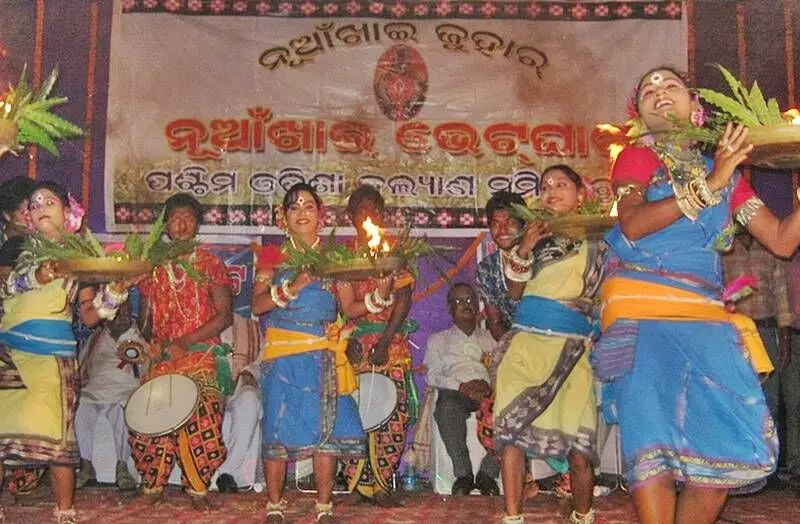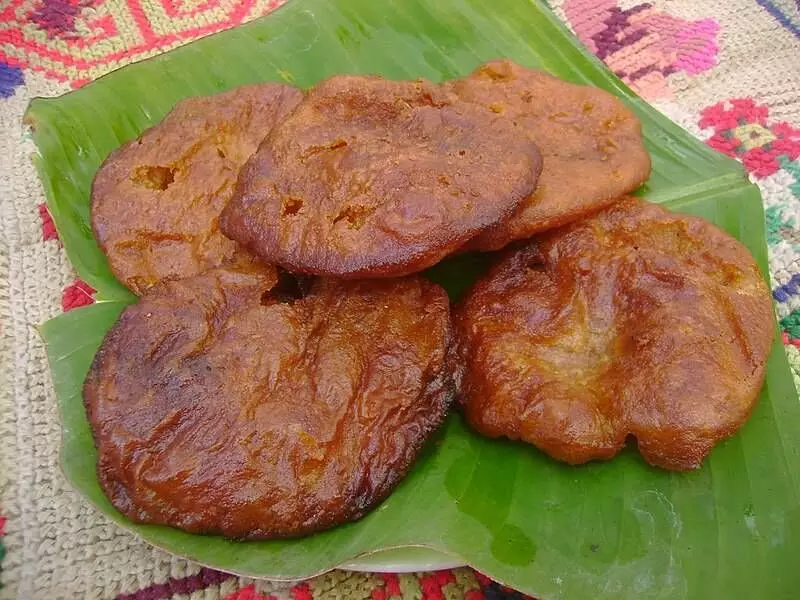Today, millions of households in Odisha are brimming with the festive spirit of Nuakhai — a festival that celebrates the first harvest of paddy and is marked with great pomp and celebration. Akin to Punjab’s Baisakhi, Assam’s Bihu, Kerala’s Onam and Tamil Nadu’s Pongal, the agrarian connotation is at the heart of the Nuakhai festival.
Farmers in western Odisha cultivate ‘saria’ variety of paddy especially for the festival which is reaped within 60 days after sowing. The districts where Nuakhai is widely celebrated include Kalahandi, Sambalpur, Balangir, Bargarh, Sundargarh, Nuapada, Sonepur, Boudh and Jharsuguda.
Such is the importance of the harvest, that the paddy is worshipped as a sacred blessing from the gods and it is first served to the local presiding deity depending upon the beliefs of the community. Upon the offering of the cooked rice to the deity, family members come together and eat various local cuisines made of freshly harvested rice, with sweetened rice cakes being a hot favourite amongst the kids as well as grown ups.

Nukhai is an occasion for people to lay their differences to rest and start relationships afresh. In the evening, people meet one another and exchange greetings. Photo by arrangement
The nine-day long celebrations
Basudev Das, a researcher and member of Odisha Sahitya Academy, told Gaon Connection that thousands of devotees visit the famous goddess Samaleswari temple in Sambalpur district where the festival is most popular. “They offer the new crop or ‘Nabanna’ to the deity, to whom the festival is dedicated. After eating ‘Nabana’ people wear new clothes and seek blessings from the elders,” he said.
“Following the Hindu calendar, the day falls on the Panchami Tithi of the lunar fortnight in Bhadrapada (August–September) months, the day after the Ganesh Chaturthi festival. Nuakhai is also called Nuakhai Parab. It has great significance for farmers and the agricultural community,” the researcher added.

Das further informed that Nuakhai is believed to be composed of nine colours and as a consequence, nine sets of rituals are followed as a prelude to the actual day of celebration.
These nine colours include Beheren (announcement of a meeting to set the date), Lagna dekha (setting the exact date for partaking of new rice), Daka haka (invitation), Sapha sutura and lipa puchha (cleanliness), Ghina bika (purchasing), Nua dhan khuja (looking for the new crop), Bali paka (final resolve for Nuakhai by taking the prasad (the offering) to the deity, Nuakhai (eating the new crop as Prasad after offering it to the deity, followed by dancing and singing) and Juhar bhet (respect to elders and exchanging of gifts).
Origin of Nuakhai & the Sambalpuri connection
Although the knowledge about the origin of the festival has been lost over time, oral tradition dates it back to the 14th century, during the reign of the first Chauhan King Ramai Deva, founder of the Patna kingdom which is currently part of Balangir district in western Odisha.
“In his efforts to build an independent kingdom, Raja Ramai Deo realised the significance of settled agriculture because the subsistence economy of the people in the area was primarily based on hunting and food gathering. He realised this form of economy could not generate the surplus required to maintain and sustain a state,” Das, the researcher informed.

The districts where Nuakhai is widely celebrated include Kalahandi, Sambalpur, Balangir, Bargarh, Sundargarh, Nuapada, Sonepur, Boudh and Jharsuguda. Photo by Creative Commons
“During state formation in the Sambalpuri region, Nuakhai as a festival played a major role in promoting agriculture as a way of life. Thus credit can be given to Raja Ramai Deo for making Nuakhai a symbol of Sambalpuri culture and heritage,” he added.
Nuakhai vital to social fabric & harmony
Nukhai is an occasion for people to lay their differences to rest and start relationships afresh. In the evening, people meet one another and exchange greetings.
“All differences are discarded and elders are wished nuakhai juhar. The elders bless their juniors and wish them long life, happiness, and prosperity. Even the separated brothers celebrate the festival under one roof. In many villages and towns, people organised Sambalpuri and folk dances and songs to celebrate the festival. Sambalpuri songs are sung to express happiness during festivities enjoyed to celebrate the harvest season,” a Paresh Dash, Sambalpur-based retired teacher, told Gaon Connection.

Meanwhile, many people in Odisha are rejoicing as it is for the first time in almost two years that the state is celebrating the festival in a full-fledged manner. The festivities were a low-key affair due to the COVID-19 outbreak for the past two years.
“We are delighted to observe this festival after a two year gap. Hundreds of people returned to their homes from faraway places for this festival,” Ranjan Panda, a resident of Sambalpur district said happily.




















